David's Astronomy Pages
|
Images (S80) |
Images (Main) |
Home Page |
Images (S82) |
|
- 6.1/2 hour imaging session was with a focal reducer bringing 8" f/10 LX200 to
f/7.
- Images were recorded with ST7 CCD camera. Filter Wheel with C filters
- Session was operated mainly under remote
control
- More notes (including investigating into Flat Frame
Components and use of Night Sky Flats)
Back to Top
| Comet C/2004 Q2 (Machholz) (passing through Taurus) |
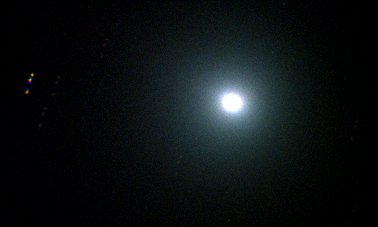
|
|
CCD Colour Composite Image Blue (av 3 x 60s B Filter, 165%), Green (av 3 x 30s V Filter,115%), Red (av 3 x 30s R Filter, 100%) 2004-12-28 23:33 h UT (#81058-69) |
| Comet C/2004 Q2 (Machholz) in star field
of 1° 10' x 0° 55' Coma is around 14 arc min diameter, but no sign of any tail is recorded. |
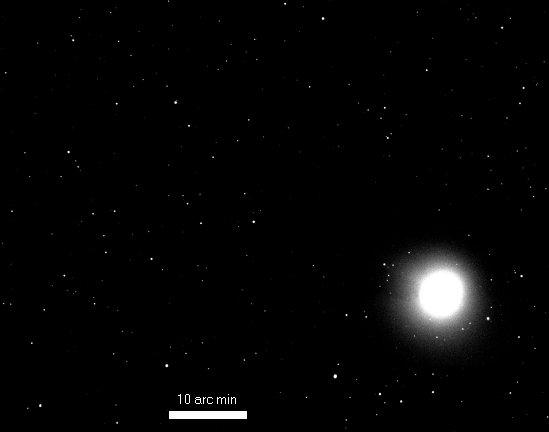
|
|
CCD Image Mosaic (30 frames) 60 sec exposure, C Filter 2004-12-28 22:38 h to 23:25h UT (#81023-56) (Due to motion of comet between frames, a minor amount of blending was required at boundaries of certain frames) [ Full Size Image ] |
| Comet C/2004 Q2 compared with star of similar brightness |
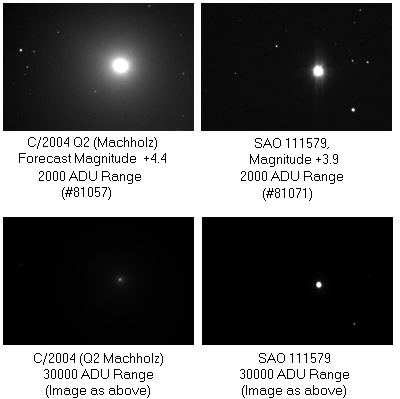
|
| Comet C/2004 Q2 (Machholz) (passing through Taurus) |
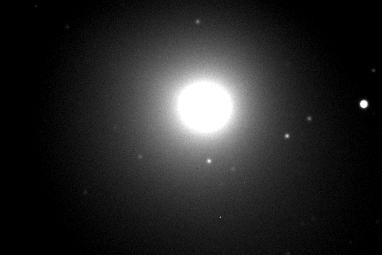
|
|
CCD Image 2 min exposure, C Filter 2004-12-28 22:14 h UT (#81022) |
Back to Top
Anomalous X-ray pulsers (AXPs) have recently been described by Robert Duncan in Sky & Telescope, January 2005 (pp 34-41). Many of them could be Magnetars - neutron stars (or pulsars) with a very strong magnetic fields. AXP's are so faint in visible light that normally only the world's largest telescopes have any chance to detect them. However these stars probably brighten dramatically during intense gamma-ray flares and may become visible to amateur astronomers with moderate equipment. The two nearest known AXP's, 4U 0142+615 and 1E 2259+586 (both lying in Cassiopeia) are potential targets for regular observation. Robert Duncan estimates that the potential peak brightness could reach 12th Magnitude, but rapidly fall to 15th mag after 5 minutes and 18th mag after 15 minutes. The bad news is that giant flares are likely to be rare (one per 10 to 100 years for a given AXP), however the frequency of optical flares is poorly understood. Whilst considerable luck would probably be required to witness a flare, simply providing information on the upper limits on the visible light flux during smaller flares might be scientifically useful.
With the possibility of making a contribution here, I may be able to take occasional images over the position of these two stars. My existing scripts allow me to take pictures and then automatically search of visible objects at the stars locations and estimate magnitude, so that if a flare is in progress, further images can be taken. With this objective I took a series of baseline images of 4U 0142+615 and 1E 2259+586. No object was detected at either location down to 15th/16th Magnitude (realtime log file)
Base line images for the star field covering the AXP star 4U 0142+615 taken with C and R filters :
| Star field for 4U 0142+615
area with C Filter 2 min exposure, magnitude limit +16.0 (Cassiopeia) |
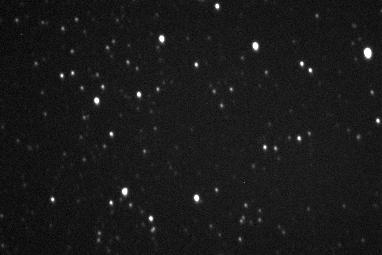
|
|
CCD Image 2 min exposure, C Filter 2004-12-29 00:43h UT (#81089) |
| Annotated star field for 4U 0142+615 Catalog position is marked by mauve circle, No object can be seen at the centre of the circle, though a couple of Mag +15 stars can just be seen outside the circumference of the circle. |
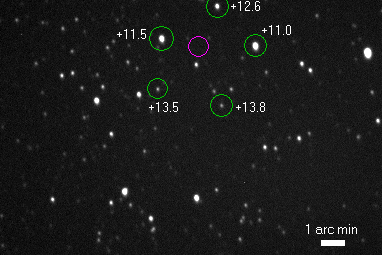
|
| CCD Image as above |
|
Star field in R Band 30 sec exposure, magnitude limit +14.2 |
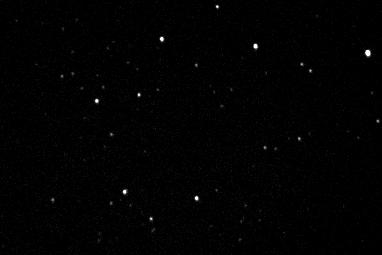
|
|
CCD Image 30 sec exposure, R Filter 2004-12-29 00:45h UT (#81090) |
Base line images for the star field covering the AXP star 1E 2259+586 taken with C and R filters :
| Star field for 1E 2259+586
area with C Filter 2 min exposure, magnitude limit +15.5 (Cassiopeia) |
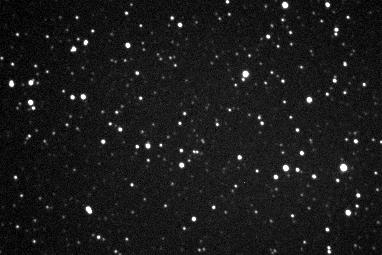
|
|
CCD Image 2 min exposure, C Filter 2004-12-29 00:51h UT (#81094) |
| Annotated star field for 1E
2259+586 area Catalog position, +/- 2", is marked by mauve circle, No object can be seen at the centre of the circle, though a number of faint Mag+15 stars can just be seen around the inner circumference of the circle. |
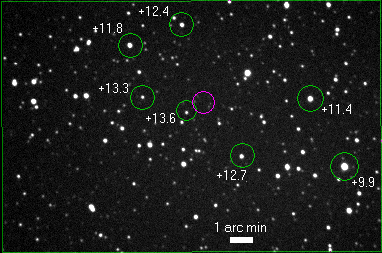
|
| CCD Image as above |
|
Star field in R Band 30 sec exposure, magnitude limit +14.2 |

|
|
CCD Image 30 sec exposure, R Filter 2004-12-29 00:49h UT (#81093) |
Internet Links
4U 0142+61 (gamma.mpe-garching)
Back to Top
| NGC 1981 (Orion) |
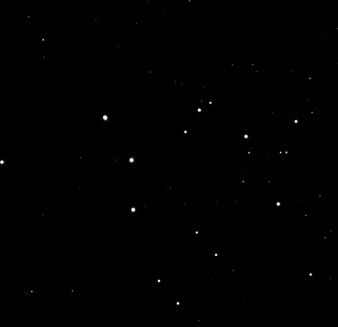
|
|
CCD Image 20 sec exposure, C Filter 2004-12-29 01:03 h UT (#81096-106) [Larger Size] |
Back to Top
| NGC 1977 (Orion) |
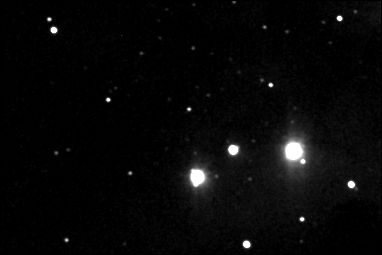
|
|
CCD Image 30 sec exposure, C Filter 2004-12-29 01:03 h UT (#81108) |
Back to Top
| NGC 2024 (Orion) Bright Star is Alnitak, Mag +1.8 |
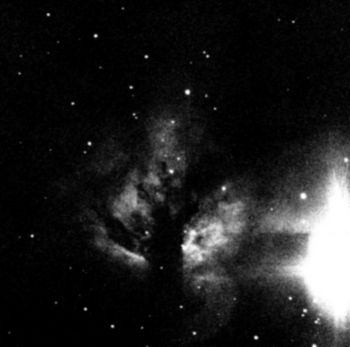
|
|
CCD Image Mosaic (6 frames) 2 min exposure, C Filter (x0.5 size reduction) 2004-12-29 01:30 h UT (#81125-30) (Larger Size) |
Back to Top
| Moon (94.6% phase) | |
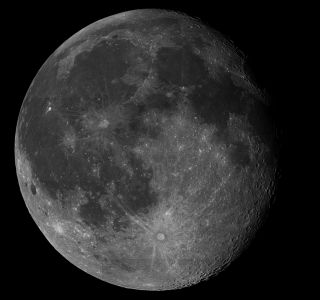
|
|
|
CCD Mosaic of 12 frames, 0.11s exposure, B filter 2004-09-29 01:58h UT (#81150-61) Larger Size |
|
|
Moon - comparison of mosaic image with equivalent mosaic from 4
months ago Notice the change in apparent diameter and the relative positions of lunar features. |
|
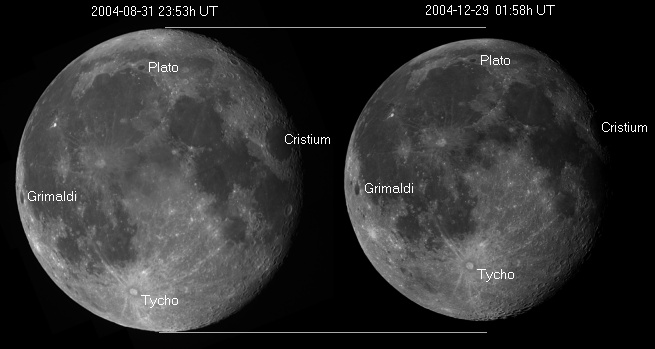
|
|
|
Left 2004-08-31 (95.4% phase) Distance From Earth : 378,430 km Apparent Diameter 31' 35" (TheSky) ( My Measure : 32' 02" ) |
Right 2004-12-29 (94.6% phase) Distance From Earth : 404,740 km Apparent Diameter 29' 31" (TheSky) (My Measure : 29' 48") |
| (Larger Size) | |
|
Moon - Grimaldi /Tycho / Copernicus Region Comparison of mosaic image with equivalent mosaic from 4 months ago. |
|
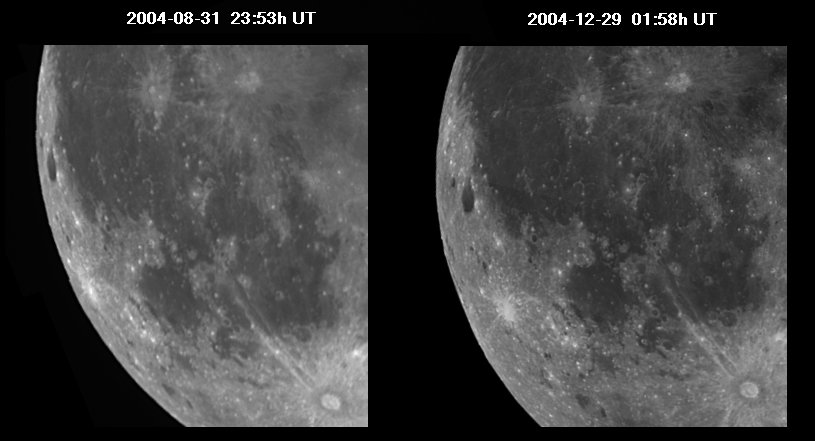
|
|
Back to Top
| M44 (Cancer) |
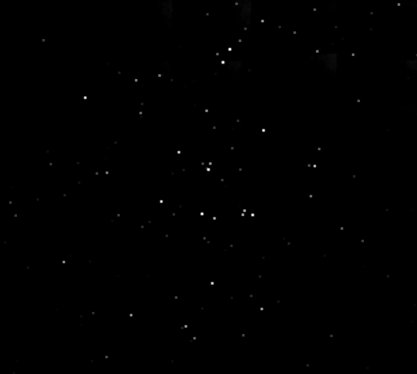
|
|
CCD Image Mosaic (35 Frames) 10 sec exposure, C Filter 2004-12-29 02:50 h UT (02:42 to 02:58 h) (#81247-51) (Full Size) |
Back to Top
| M97 (Ursa Major) |
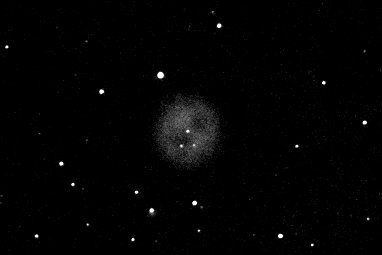
|
|
CCD Image 5 x 2 min (average combine), C Filter 2004-12-29 03:09 h UT (#81247-51) |
Back to Top
| M61 (Virgo) |
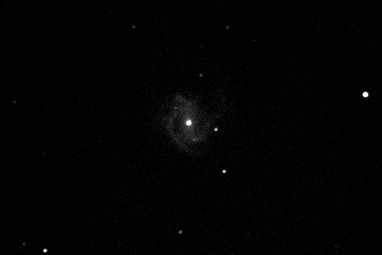
|
|
CCD Image 7 x 60s exposure (average combine), C Filter 2004-12-29 03:38 h UT (#81263-69) (Notes on image reduction using Smoothed Night Sky Flat ) |
Back to Top
| M94 (Canes Venatici) |
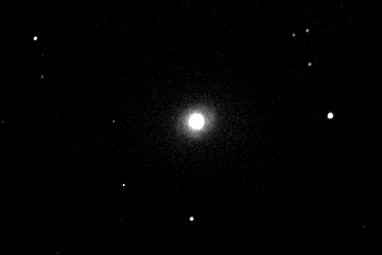
|
|
CCD Image 3 x 60s exposure (median combine), C Filter 2004-12-29 03:54 h UT (#81277-79) (Notes on image reduction using Smoothed Night Sky Flat ) |
Back to Top
| M13 (Hercules) |
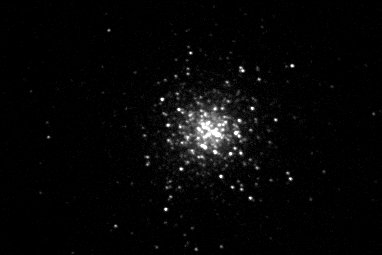
|
|
CCD Image 3 x 60s exposure (median combine), C Filter 2004-12-29 04:06 h UT (#81285-87) |
Back to Top
| This Web Page: | CCD Images - Session 81 (2004-12-28) |
| Last Updated : | 2015-05-16 |
| Site Owner : | David Richards |
| Home Page : | David's Astronomy Web Site |